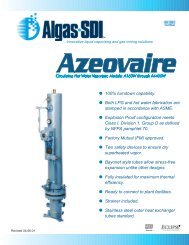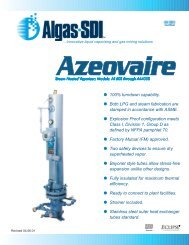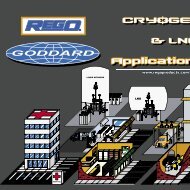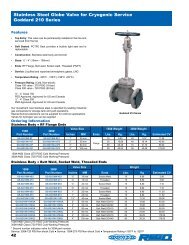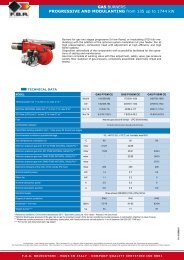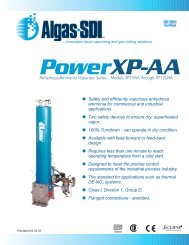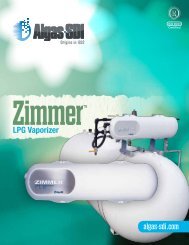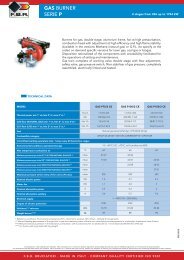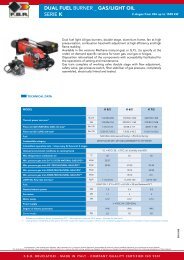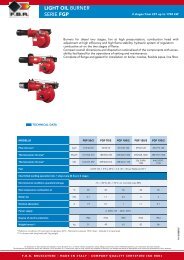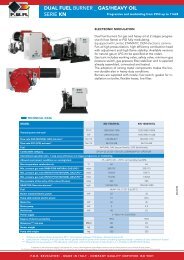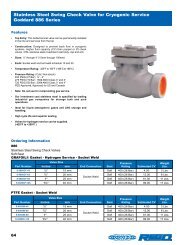LP-Gas Serviceman’s Manual
LP-Gas Serviceman's Manual - cecogas
LP-Gas Serviceman's Manual - cecogas
- No tags were found...
Create successful ePaper yourself
Turn your PDF publications into a flip-book with our unique Google optimized e-Paper software.
Leak Testing the Installation<br />
NOTE: After the piping system and appliance connections have<br />
been proven to be leak tight, the air may be purged from lines.<br />
Refer to NPGA Propane Safety and Technical Support <strong>Manual</strong><br />
Bulletin T403 and NFPA 54 for more information.<br />
Regulator Delivery Pressure<br />
Check the regulator delivery pressure with approximately half the<br />
total appliance load in use. Your gauge should read 11 inches water<br />
column at the appliance. Adjust regulator if necessary. Following<br />
this, turn on all appliances to make sure that pressure is maintained<br />
at full load. If an excessive pressure drop occurs, inspect line for<br />
“kinks,” “flats,” or other restrictions.<br />
CAUTION: Appliance regulators are installed on most appliances<br />
and may be preset by the manufacturer for flow pressure lower<br />
than 11 inches water column. It is recommended the manometer<br />
or test gauge be installed at a location other than the range orifice<br />
or appliance pressure tap when performing lockup and delivery<br />
pressure checks.<br />
Regulator Lock-up and Leakage<br />
After this, shut off all appliance valves to determine if the regulator<br />
has a worn seat or if it has been set too high to compensate for<br />
line losses due to undersize piping. A slight rise in pressure will<br />
occur under these conditions. This is called the “lock-up” pressure.<br />
The lock-up pressure should not exceed 130% of the regulator set<br />
delivery pressure. A quick rise in pressure above this point will<br />
indicate undersize piping.<br />
Continue this same test for 5 minutes or more. If a creeping rise is<br />
noticed in the pressure, the regulator seat is not closing off properly.<br />
Inspect regulator inlet nozzle for dirt, scratches, or dents, and<br />
seat disc for signs of wear. Replace where necessary.<br />
For more information, refer to NFPA 54, Section on Inspection,<br />
Testing and Purging, NPGA Propane Safety and Technical Support<br />
<strong>Manual</strong> Bulletin 403, “Pressure testing and leak checking <strong>LP</strong> <strong>Gas</strong><br />
piping systems.” For more information on setting single stage regulators,<br />
request RegO ® Products Technical Guide 107.<br />
39



